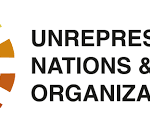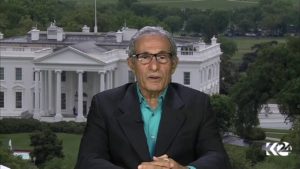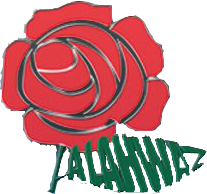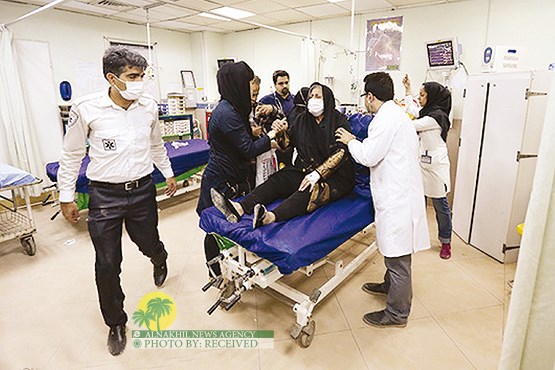
By: James Miller
Huffington Post
his article originally appeared on Dissected News, where James will be live-blogging the events surrounding the anniversary of the June 12th election in Iran.
For weeks, I had been following the lead-up to the June 12th, 2009 election in Iran. The mainstream news had hit me with a bombshell: a growing number of Iranians hated their government, wanted diplomatic and trade relations with the United States, and might oust hardline President Mahmoud Ahmadinejad in the upcoming election. It was time to consult the Internet.
I discovered the Tehran Bureau, an independent group of Iranian-Americans who were breaking down complex and paradoxical information for the Average Joe. I was hooked. With a new American President, and the prospect of a new Iranian President, peace and international cooperation might have been right around the corner.
It hasn’t played out that way. The evidences points to a rigged election, an attempt by Ahmadinejad (and possibly the Supreme Leader) to show dominance and avoid a run-off election, or an outright defeat. My hopes for a new tomorrow were dashed…for about a day or so.
The Iranian people took to the streets by the hundreds of thousands (Time estimated two to three million protesters), braving beatings and arrests to voice their desire for freedom and democracy. Using Twitter, Youtube, and Facebook, the images of the protests were escaping even the tightest government censorship. For hours, I was glued to the images of the protesters. It started on June 13. The rallies grew, and the police retaliated the next day. Still, the protests continued, their voices grew louder, and by June 15th a sea of green could be seen assembling peacefully in Iran, and at one point the line of protesters was at least five miles long. Even though I had attended Barack Obama’s inauguration a few months earlier, I was still blown away by the size of the crowds, who bravely protested despite the violence. Like the song says, “I know change gonna come.”
On June 16, 2009, I logged on early and read an article describing how people could help the Iranian protesters by changing our Geotag location in Twitter to Iran to hide the identities of the protesters. Within hours, thousands of others had done what I had done. Soon, my email inbox, my twitter screen, and my internet browser were scrolling information as fast as the user-interface in the Matrix movies. Within days, I had Tweeted news of the protests, analyzed Youtube videos protests, and helped pinpoint where Iranians were being attacked by government supporters. I had even received emails of the location of Iranian tanks, which I put on Twitter, which someone from Germany put on a Google map, and now I could see a satellite image of downtown Tehran with the location of tanks, roadblocks, and riots; all from halfway across the world.
I don’t want to overstate the importance of Twitter (or my involvement), here. It was always clear that getting information out of Iran with Twitter was easier than getting information into Iran, and after a few days both activities became a lot harder to do. Iranians spies followed our profiles, IP addresses were tracked, websites hacked, blogs filtered, Facebook and Youtube blocked, and the internet slowed. Still, the information poured in. The Green Movement seemed unstoppable.
Large shows of resistance still reared their head, like on the 40th day after the murder of Neda Agha-Soltan, when protesters gathered en masse in Behesht-e-Zahra cemetery. Soon, the government censorship of the internet increased, as the Green Movement planned its next steps, and as it became clear that official election results would not be effectively overruled by forces within the government, the amount of information I received slowed to a trickle. Though there were almost daily protests, they were smaller in number.
Qods day (9-18-2009) changed everything. A national holiday often marked by Iranians chanting “Death to Israel/America,” the protesters co-opted the day and gave Ahmadinejad a PR black eye. The Green Movement reminded the world that it was far from dead history, but it was alive and innovative. The pictures and videos were music to my ears. The movement grew all fall, with student protests on November 4th and December 7th. I was so encouraged that I decided to experiment with my own live blog of events during the December 27th “Ashura” celebration, only to receive 30 times more traffic than my little blog had ever received before. As 2010 arrived, the Green Movement seemed poised to claim a significant victory over the ruling regime.
On February 11th, on the anniversary of the forming of the Islamic Republic, some would have you believe that disaster struck for the Green Movement. Ahmadinejad buses in thousands of supporters, surrounded Azadi square with security and fences, and kept the protesters far away from the cameras of foreign journalists. However, in recent months the Green Movement has shown that the fires of resistance have not died down. Despite no calls for an organized protest, the government of Iran felt so threatened that they banned Persian New Year celebrations, only to have them occur anyway. Widespread labor strikes have been launched in Kurdistan, and students have resumed protesting at universities in Tehran where as many as four have died in recent days.
It’s been a long, interesting, and tumultuous year in Iran, but the Green Movement is far from dead, or even asleep. Rather, it has been waiting for June 2010 to pounce. We’ll have to wait to see who is the Caspian Tiger in Iran, the government or the people. If I were a betting man, I’d say that the next year may give us the answer.
















+ There are no comments
Add yours